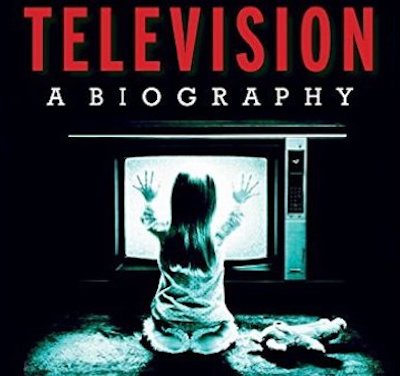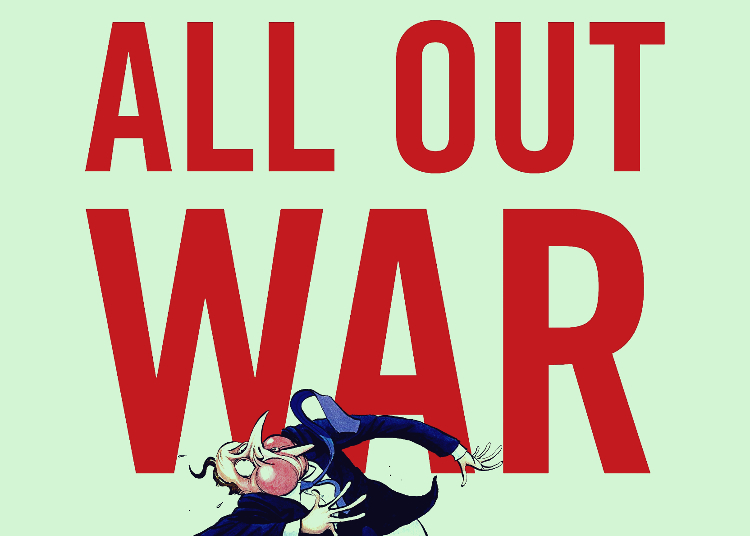There are other books on the Brexit campaign, from the perspectives of either leavers or remainers, though Tim Shipman’s
All Out War is the only account of both the campaign and its aftermath, and the only attempt to tell the story from both sides. As the
Financial Times wrote in its review last weekend, Shipman “has spoken to every key individual to produce the definitive first draft of history, a comprehensive yet impartial study of how Brexit won.”
The book (subtitled
The Full Story of How Brexit Sank Britain’s Political Class) begins with David Cameron’s prophecy that a referendum on the UK’s EU membership “could unleash demons of which ye know not.” As Shipman explains, plenty of demons were unleashed: “The demons were the forces of Euroscepticism that had been growing in the Conservative Party for three decades... Cameron also believed in the demons of economic disaster in the event of a Leave vote, the upsurge in nativist sentiment during the campaign, even the willingness of campaigners on both sides to stretch the truth to make their point during the campaign.”
Cameron’s decision to hold a once-and-for-all referendum to appease his own backbenchers (labelled “Palaeosceptics” by Shipman, “a term I hope describes their longevity without implying that they were old-fashioned”) ultimately resulted in Brexit, the resignation of a socially liberal leader (Cameron), and the appointment of his more conservative successor (Theresa May). Shipman’s account of these events is supported by his exclusive access to emails, text messages, and other private documents (notably, Boris Johnson’s unpublished pro-EU editorial and Cameron’s undelivered victory speech.)
The pre-referendum negotiations with other EU members were destined to produce insubstantial results: “media coverage had focused on what rabbit Cameron might pull from his hat to boost the deal. In the event, it emerged sick with myxomatosis.” This led to Boris Johnson joining the leave campaign, an announcement that Johnson calls “an imperial goatfuck”. Shipman notes Johnson’s history of Euroscepticism (“Johnson invented the ‘straight bananas’ school of reporting from Brussels”), and describes Michael Gove’s extraordinary betrayal of Johnson, who had been almost certain to assume the Tory leadership, as “the most remarkable moment in British politics since May 1940”.
The ‘Stronger In’ campaign was undone partly by its pessimistic forecasts, such as Barack Obama’s counter-productive intervention. Shipman doesn’t conclusively determine whose idea Obama’s comment was—“There are conflicting accounts of how the words ‘back of the queue’ found their way into Obama’s mouth”—though he attributes it largely to George Osborne. The spurious prediction that Brexit would cost £4,300 per household per year was another example of negativity backfiring: “voters did not believe anything they were told by the Treasury, including the £4,300 per household figure.”
In contrast, the anti-EU campaigners had a simple slogan (“Let’s take back control”), and a misleading though effective statistic. Their campaign bus was plastered with the message “We send the EU £350 million a week”, and even when it was exposed as a grossly exaggerated figure, it still worked in their favour: “Every time there was a row about the size of the cost to taxpayers of EU membership, it simply reinforced in voters’ minds that there was a high cost.”
Shipman cites immigration as the determining factor in the ‘out’ vote: “If we have to pinpoint a day when Vote Leave gained the upper hand it is undoubtedly... the day the latest immigration figures were published.” In this ‘post-truth’ era, the overwhelming benefit that EU migrants provide for the UK economy (£2.5 billion per year in net tax contributions) was overlooked in favour of an emotional appeal to nationalism, stoked by xenophobic tabloids. It was clear from the final debate that the leavers had a strong chance of success: “The last word... went to Boris Johnson. The final line of his peroration took the roof off: ‘I believe this Thursday can be our country’s Independence Day.’”
Cameron at Ten (by Anthony Seldon and Peter Snowdon) and
In It Together (by Matthew d’Ancona) cover Cameron’s first term as PM, before the Brexit campaign. (Shipman suggests that d’Ancona’s book—particularly comments from one of its sources, George Osborne—was one of the reasons that Iain Duncan Smith resigned from the government.)
All Out War is as thorough and well-sourced as those earlier accounts, though it has no index. Its author is the political editor of
The Sunday Times.





